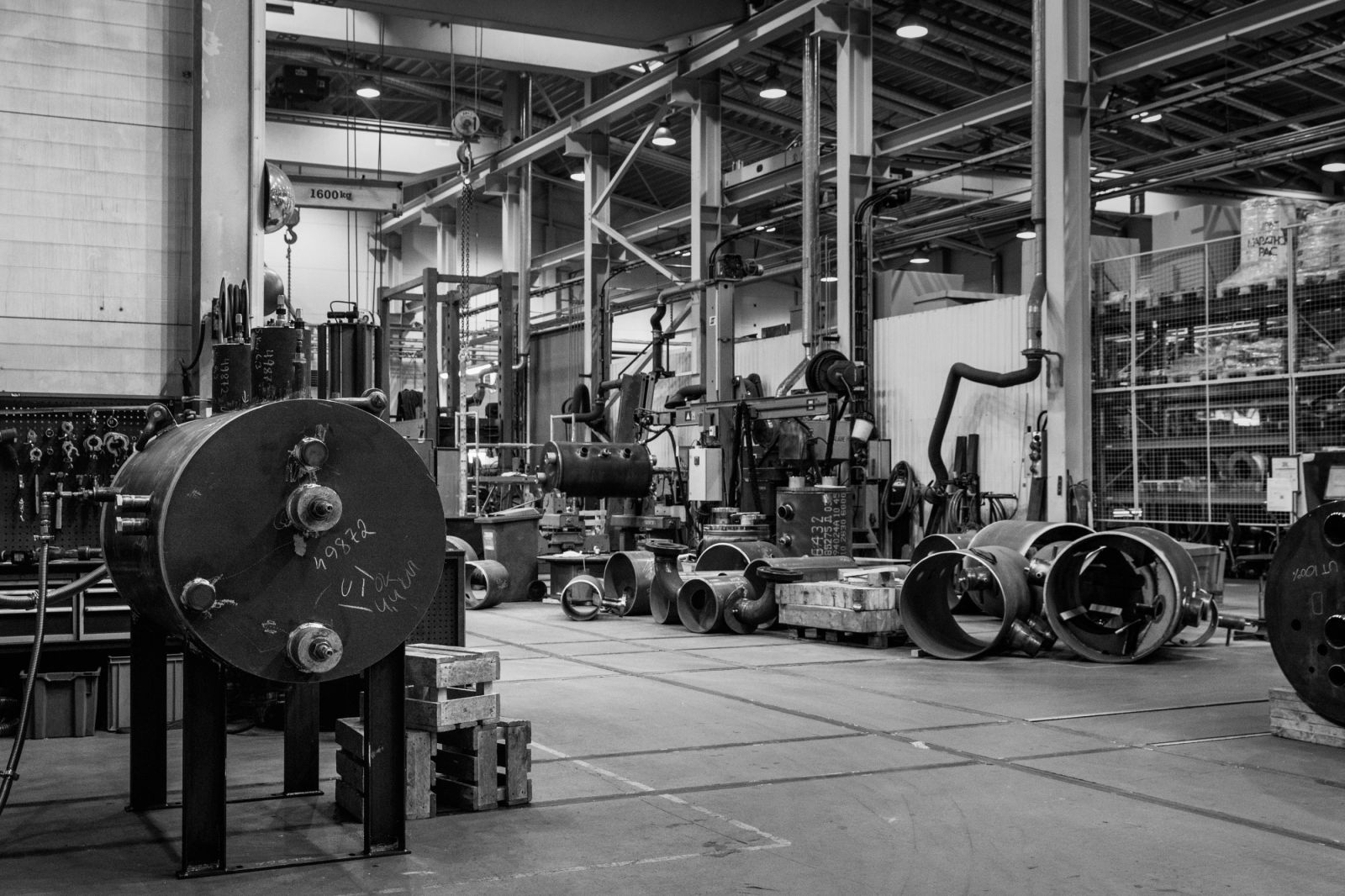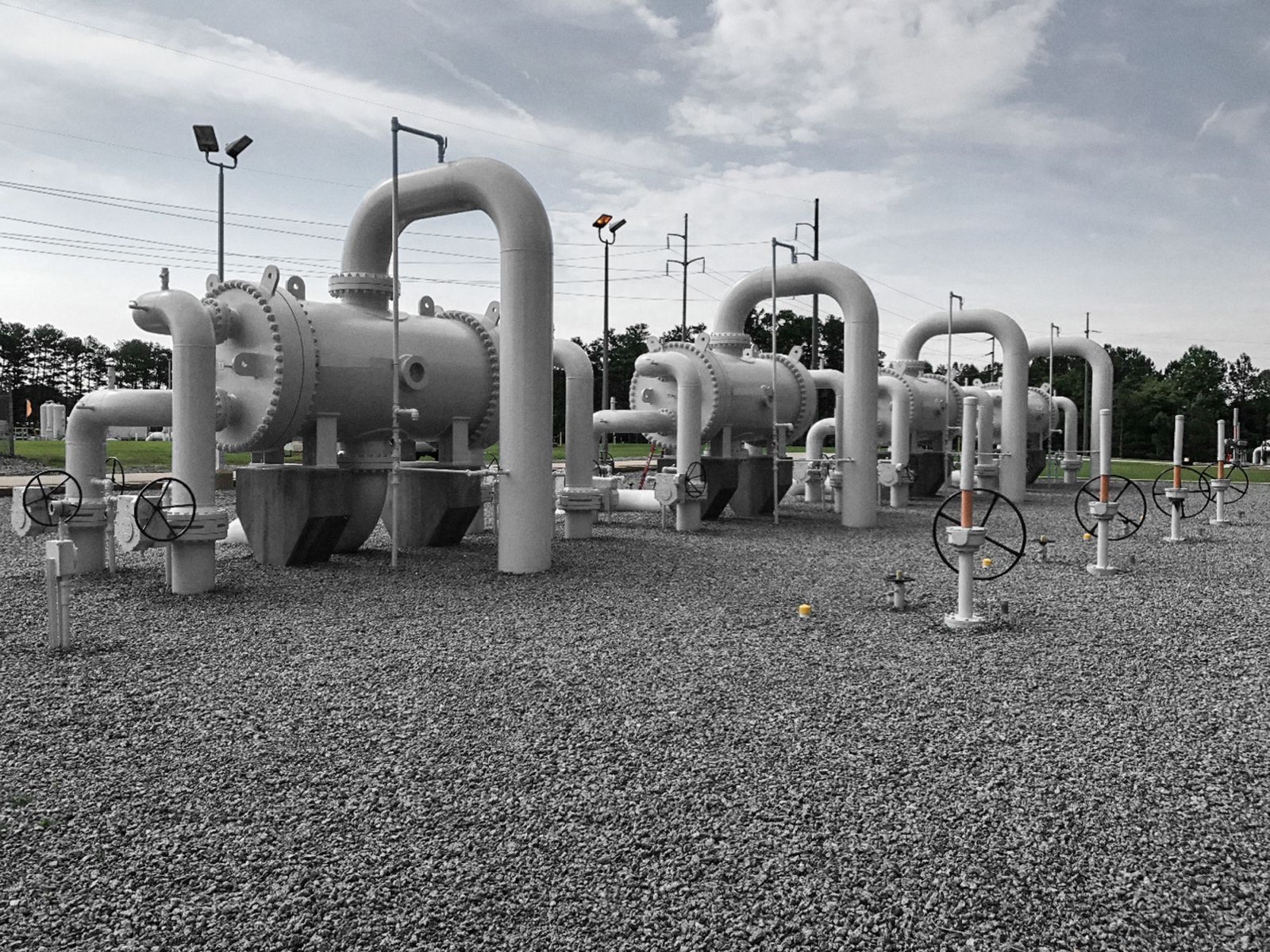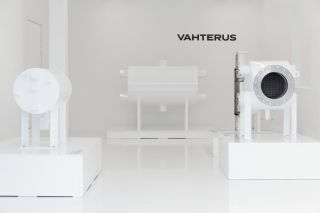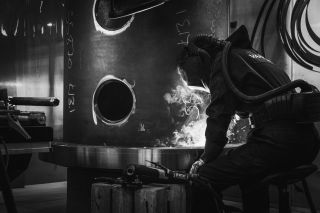Colonial Pipeline Runs Between the Gulf Coast and the New York Harbor Area

Colonial Pipeline, headquartered in Alpharetta, Georgia, is the largest US refined products pipeline system and can carry more than three million barrels of gasoline, diesel and jet fuel between the US Gulf Coast and the New York Harbor area. The company was founded in 1961 and construction of the pipeline began in 1962. The pipeline is 5,500 miles (8,850 km) long. Colonial own the pipeline but no gasoline; they act as a carrier (just like DHL or UPS).
The pipeline, originating at Houston, Texas, on the Gulf Coast and terminating at the Port of New York and New Jersey, travels through the coastal states of Texas, Louisiana, Mississippi, Alabama, Georgia, South Carolina, North Carolina, Virginia, Maryland, Delaware, Pennsylvania and New Jersey. Branches from the main pipeline also reach Tennessee. It delivers a daily average of 100,000,000 US gallons of gasoline, home-heating oil, aviation fuel and other refined petroleum products to communities and businesses throughout the South and Eastern United States. The pipeline serves airports, military bases and the Department of Defense, and is regulated by almost every industry since the pipeline crosses many state lines.
The main lines are 40 inches and 36 inches in diameter, with one primarily devoted to gasoline and the other carrying distillate products such as jet fuel, diesel fuel and home-heating oil. Fifteen associated tank farms store more than 1.2 × 109 US gallons of fuel and provide a 45- day supply for local communities.
Field operations are divided into three districts:
- The Gulf Coast District, which includes Texas, Louisiana and Mississippi, and is primarily responsible for the originating deliveries of Colonial. Colonial primarily draws products from refineries along the US Gulf Coast. It also uses a few refineries in the Northeast.
- The Southeast District, which includes Alabama, Tennessee, Georgia, South Carolina and North Carolina. The company’s second-largest tank farm is in suburban Atlanta. Local supplies are delivered from here, and it is the origin of pipelines serving Tennessee and southern Georgia. The company’s largest tank farm is in Greensboro, North Carolina, where the two mainlines originating in Houston terminate. Deliveries to the Northeast originate from Greensboro.
- The Northeast District, which includes Virginia, Maryland and New Jersey. Colonial’s Northeast operations also serve Delaware and Pennsylvania. In Linden, New Jersey, Colonial operates the Intra-Harbor Transfer system, which enables numerous customers to transfer products between themselves and access barge transportation for exporting product.
Colonial connects directly to several major airports, including Atlanta, Nashville, Charlotte, Greensboro, Raleigh-Durham, Dulles and Baltimore-Washington. It serves metropolitan New York airports via connections with Buckeye Pipeline. At the company’s second-largest tank farm in Austell, GA, it was highlighted in early 2016 that there were four Shell & Tube exchangers that were causing maintenance headaches and becoming a cause for concern. These exchangers were originally installed in 1978 and their function was to cool the full pipeline flow of gasoline and ensure that the product stayed below the flash point, notably in the warmer months of the year.
Cooling-tower water is used to cool the gasoline. An engineering task team, led by Rick Arnold, Engineering Director of Colonial Pipeline, started to evaluate options, and Vahterus Plate & Shell Heat Exchangers (PSHEs) were highlighted as an alternative to the existing Tubular exchangers. Arnold had experience of PSHE technology through installations dating back to 2005/2006, which had run very successfully in the Atlanta area, and thus he had proposed PSHE as a good option for this application. Vishal Kandachiya, from the Engineering Services Team in Alpharetta, GA, was tasked as Lead Engineer to make the evaluation, which would then be presented to the team on site, in Austell – notably, to Steve Walsh, the Project Manager.
Vahterus received a call into the Charlotte, NC office in February 2016 with the design scope. The same week, Jonathan Pascoe, President of Vahterus Americas, and Tuomas Aikkinen, Key Account Manager from Vahterus Finland, who happened to be in the USA at that time, attended an initial meeting with Mr Kandachiya in Alpharetta, GA. During this meeting, Vahterus PSHE was further introduced to Colonial, as well as the initial exchanger design basis. Based on the pipeline flow rates, the solution involved multiple exchangers of appreciable size.

After various design revisions and much discussion, the decision was taken to award Vahterus the work, but the project was under a significant time constraint. A purchase order was placed in July/August 2016 and delivery of the exchangers to site was required by January 2017. This meant that they had to be shipped from Finland before Christmas of 2016 to allow the site sufficient time to install them by May 2017, and certainly before the critical/ warm months of the year.
The Vahterus team in Finland, led by Anna-Leena Huhta-Aho (Project Manager) and Henri Kärmeniemi (Senior Designer), were tasked with achieving the desired delivery and working through the detailed design. At the same time, Jonathan Pascoe, with the aid of Marko Rantala, Process and Chemical Business Director (Vahterus Oy) and Tuomas Aikkinen, continued discussions with the Engineering and site team at Colonial Pipeline. Within the given timeframe, all aspects of the installation needed to be detailed and carefully considered, notably the need for full maintenance capability, as well as full isolation of each exchanger. Accessibility was also a key factor, to ensure that in any eventuality, operation would never be compromised.

As promised, the exchangers were dispatched from Finland in December 2016, arriving in Austell, GA, in late January 2017. Colonial broke ground in February 2017. This had its own complications. Since the original installation dated back to the 1970s there were no detailed drawings for the underground pipework associated with the gasoline and cooling-tower water network at the junction. Therefore, the area where the exchangers were to be installed needed to be manually dug out – no small task given that it was around the size of a football field and the depth required was approximately 6 feet.
The dimensional accuracy of the exchangers, the foundations and the pipework needed to be exact, but due to the hard work of all concerned, the installation ran smoothly. All was operational in May 2017, meaning the project had been completed on schedule and everything was ready for the cooling season, to ensure that the gasoline temperature was maintained at an acceptable level.
Four Vahterus PSHEs Type 14HH-912/1/1 installed in parallel are now used to cool the gasoline from 120 to 99.5 F using cooling-tower water at 89 F. Working alongside the Colonial Team, Vahterus provided commissioning support and guidance to ensure that all was performing correctly. The results from the on-site analysis showed that the exchangers were operating as per the design, notably in terms of the pressure drop, which is a remarkable achievement since 600,000 barrels of gasoline pass through this junction and the exchangers each day.
In February 2018, Vahterus’s senior management team, including Mauri Kontu, CEO of Vahterus Oy, visited the installation site in Austell as follow up, after the exchangers had been in service for one cooling season. Operations personnel, as well as the project team from Colonial, presented their thoughts and experiences, being very pleased with the performance of the exchangers.
Given the tight time frames of the project, the delivery schedule, as well as the exacting performance expected of the equipment, it was agreed by all that the project was a great success.
Download the case study as a PDF

Transform Your Project with Vahterus Expertise
Eager to bring innovation to your heating project? Our team of experts are ready to collaborate with you. Contact us today to embark on a journey towards cost-effective, sustainable and innovative heating solutions.
Discover more of our Customer Stories

The Beauty of Being Compact: Efficient building-heat packages open doors in Canada
Leonardo Berardinelli, Vice-President Production Division at Preston Phipps Inc, Montreal...

40 MW Ammonia Heat Pumps are Revolutionising District Heating in Sweden
E.ON, one of the world’s largest investor-owned electric utility service providers, installed four GEA heat pumps, each with a heating capacity of...

CO2 Cold Store Operates with Energy Efficiency and Sustainability in Eastern China
Yonghai Yi, Senior Sales Engineer at Vahterus China ...
